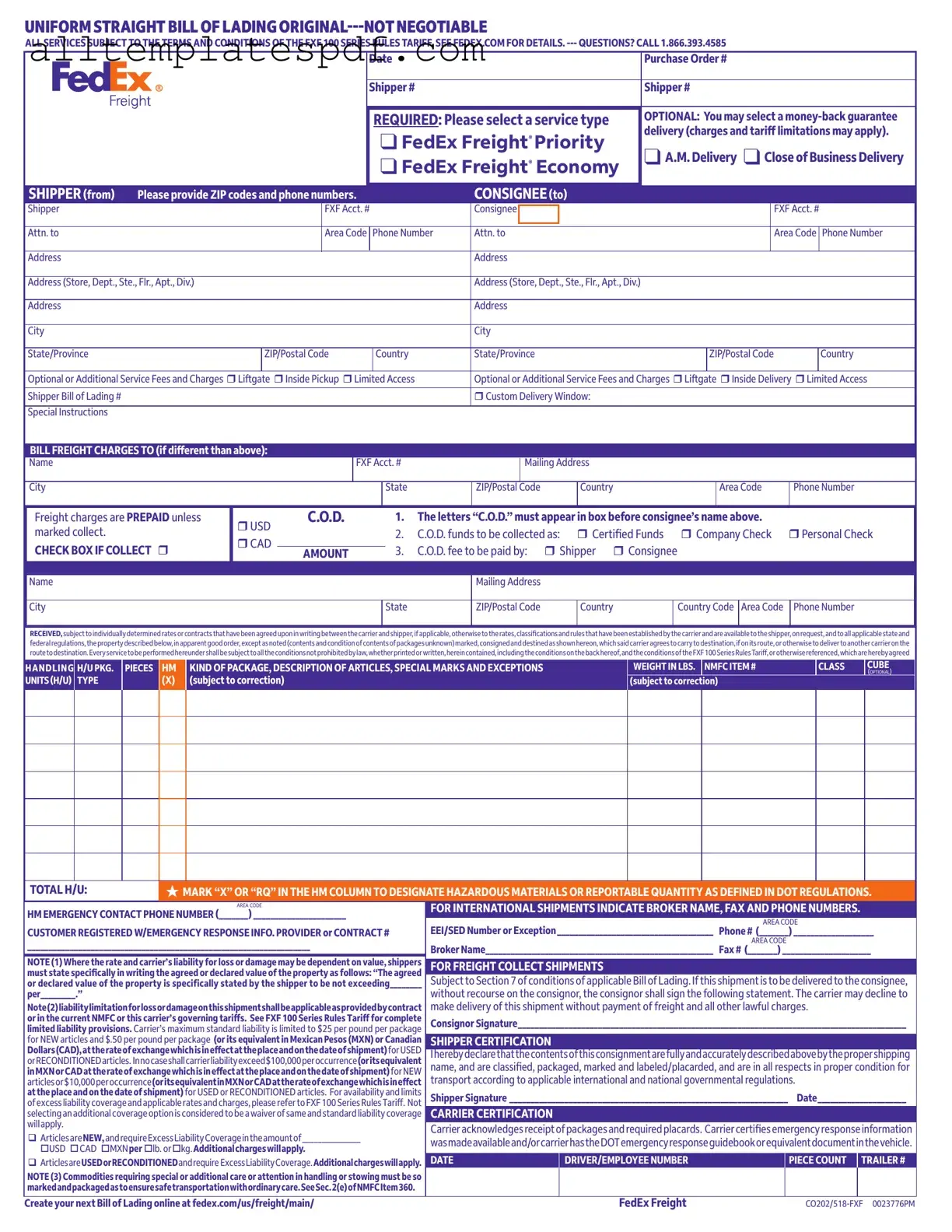Filling out the FedEx Bill of Lading form can seem straightforward, but many people make common mistakes that can lead to delays or issues with their shipment. One frequent error is not providing complete contact information for both the shipper and the consignee. Missing phone numbers or ZIP codes can complicate the delivery process, making it harder for FedEx to reach the right person if issues arise.
Another mistake involves failing to select the correct service type. The form offers various options, such as FedEx Freight Priority and Economy. Choosing the wrong service can result in unexpected charges or delivery times that don’t meet your needs. It's crucial to carefully review these options before making a selection.
Many individuals also overlook the importance of accurately declaring the value of the shipment. This is especially vital for freight collect shipments. If you don't specify the agreed or declared value, you may limit your ability to recover losses in case of damage or loss. Always fill in this section correctly to ensure proper liability coverage.
Additionally, people often forget to mark hazardous materials correctly. If your shipment contains hazardous materials, it’s essential to indicate this by marking “X” or “RQ” in the designated column. Failing to do so can lead to serious safety issues and potential legal consequences.
Another common error is neglecting to check the box for additional services. If you require services like liftgate or inside delivery, make sure to mark these options clearly. Not doing so may result in additional charges later or complications in the delivery process.
Inaccuracies in the description of the contents can also cause problems. Ensure that the description of articles, special marks, and exceptions is detailed and accurate. This information is crucial for both the carrier and the consignee and helps in handling the shipment appropriately.
People frequently forget to sign the Bill of Lading. A signature is necessary to validate the document and confirm that the information provided is accurate. Without a signature, the shipment may be delayed or rejected entirely.
Another mistake is not providing emergency contact information for hazardous materials. If your shipment includes such items, you must include an emergency contact's name and phone number. This is not just a formality; it’s a safety requirement.
Lastly, individuals sometimes fail to double-check the total weight and piece count of the shipment. These details are vital for determining shipping costs and ensuring that the package is handled correctly. Errors in these figures can lead to unexpected fees or complications during transport.
By avoiding these common mistakes, you can help ensure a smoother shipping experience with FedEx. Taking the time to fill out the Bill of Lading accurately will save you time, money, and potential headaches down the road.
